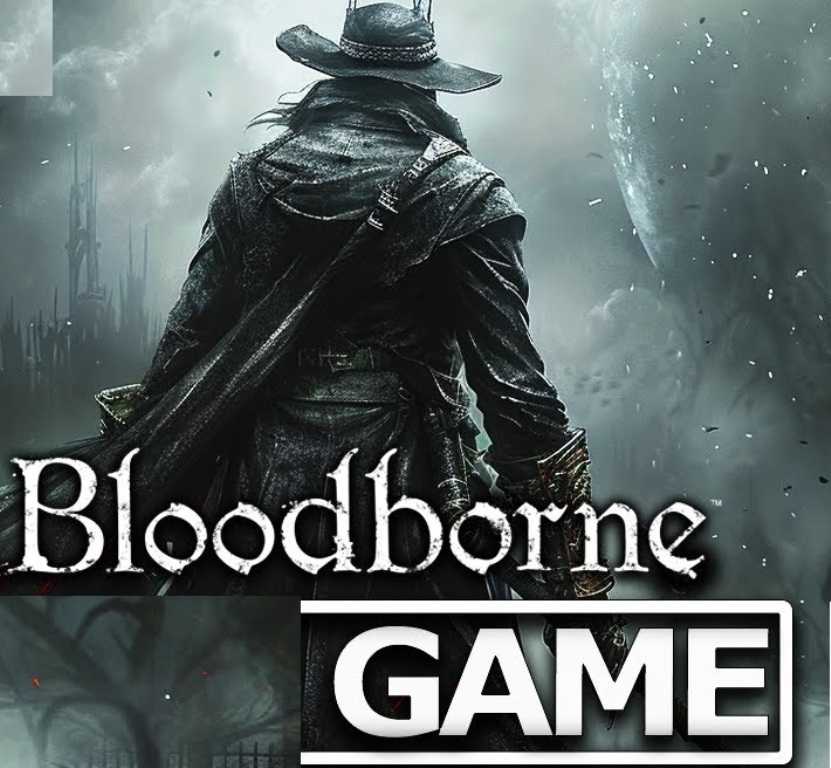<script async src="https://pagead2.googlesyndication.com/pagead/js/adsbygoogle.js?client=ca-pub-1045103186530197"
crossorigin="anonymous"></script>

Bloodborne is a popular action role-playing game developed by FromSoftware and published by Sony Computer Entertainment. Released in March 2015, it quickly gained a reputation for its intense gameplay, dark atmosphere, and complex lore. This article will provide a detailed overview of what Bloodborne is, its gameplay mechanics, story, and why it has become such a beloved title among gamers.
Introduction to Bloodborne
Bloodborne is set in a gothic, nightmarish world full of monsters, madness, and mystery. The game is known for its challenging combat, intricate level design, and rich storytelling. It’s often compared to the Souls series of games, also developed by FromSoftware, due to its similar gameplay style and difficulty.
The Setting and Atmosphere
Bloodborne takes place in the fictional city of Yharnam, a place plagued by a mysterious illness. The city is filled with dark, twisted architecture and eerie environments that create a sense of dread and unease. The atmosphere is a key part of what makes the game so immersive. The setting draws inspiration from gothic horror and Victorian themes, giving it a unique and unsettling vibe.
As the game progresses, players explore various locations beyond Yharnam, including ancient ruins and alien landscapes. Each area is carefully crafted with its own distinct look and feel, contributing to the overall dark and haunting atmosphere of the game.
Gameplay Mechanics
Bloodborne’s gameplay is known for being fast-paced and challenging. Here are some of the key mechanics that define the game:
- Combat System: Unlike the slower, more methodical combat of the Souls series, Bloodborne emphasizes speed and aggression. Players use a combination of quick attacks and dodges to defeat enemies. The game encourages a more offensive playstyle, where timing and precision are crucial.
- Weapons and Tools: Players can choose from a variety of weapons, each with unique properties and transformation abilities. Weapons in Bloodborne can switch between two forms, allowing for different attack styles. For example, a weapon might change from a single sword to a pair of blades or a whip.
- Blood Vials and Health Management: Instead of using estus flasks like in the Souls series, Bloodborne uses blood vials for healing. These vials can be collected from defeated enemies or found throughout the game world. Managing health and resources is a critical part of the gameplay.
- Hunter Tools: In addition to weapons, players can use special tools to aid in combat. These include items like the “Boom Hammer” or “Arcane Dampers,” which offer unique abilities and effects.
- Parrying and Ripostes: Bloodborne features a parry system that allows players to stagger enemies and perform powerful riposte attacks. This mechanic adds depth to the combat, as players must learn to time their parries correctly to gain the upper hand.
- Insight System: The game includes an insight mechanic that affects how players experience the world. Gaining insight reveals hidden elements and changes certain aspects of the game. It also affects the player’s sanity, adding another layer of strategy.

Character Progression
In Bloodborne, players control a Hunter who is on a quest to uncover the mysteries of Yharnam and rid it of its monstrous inhabitants. Character progression is achieved through a combination of leveling up and acquiring new equipment:
- Levelling Up: Players earn “Blood Echoes” from defeating enemies, which can be used to level up their Hunter. This allows for improvements in attributes such as strength, skill, and endurance.
- Attributes and Skills: The game features a range of attributes that players can develop, including vitality, endurance, and skill. Each attribute affects different aspects of gameplay, such as health, stamina, and weapon effectiveness.
- Weapons and Armor: Finding and equipping different weapons and armor is crucial for success. Weapons can be upgraded and customized, while armor provides protection and can affect the Hunter’s appearance.
The Story and Lore
Bloodborne’s story is complex and layered, with much of its lore being hidden and revealed through exploration and discovery. Here are some key aspects of the game’s narrative:
- The Hunter’s Quest: Players assume the role of a Hunter who arrives in Yharnam seeking a cure for their illness. As they explore the city, they uncover a deeper, more sinister truth about the nature of the disease and the origins of the city’s corruption.
- The Great Ones: The game’s lore involves powerful cosmic entities known as the Great Ones. These beings are central to the plot and have a significant influence on the events of the game. Their presence is felt throughout Yharnam and beyond.
- The Night of the Hunt: The game’s events are set against the backdrop of the “Night of the Hunt,” a period of chaos and bloodshed. This event plays a significant role in the game’s story and the transformation of the city.
- Madness and Transformation: A recurring theme in Bloodborne is the concept of madness and transformation. The game explores how the pursuit of knowledge and power can lead to horrific changes in both individuals and the world around them.
Challenges and Bosses
Bloodborne is known for its challenging gameplay and memorable boss encounters. The game features a variety of formidable enemies and bosses that test players’ skills and strategies:
- Boss Fights: Bloodborne’s boss fights are intense and often require careful observation and strategy. Each boss has unique attacks and patterns that players must learn to overcome.
- Mini-Bosses: In addition to major bosses, the game features mini-bosses and powerful enemies scattered throughout the world. These encounters add variety and difficulty to the gameplay.
- Difficulty Level: The game is renowned for its high difficulty, which is a hallmark of FromSoftware’s games. Players must be prepared for tough challenges and learn from their mistakes to progress.
Community and Impact
Since its release, Bloodborne has built a strong and passionate community of players. Fans of the game appreciate its challenging gameplay, intricate world-building, and unique atmosphere. The game has inspired various fan theories, artwork, and discussions.
- Speedrunning: Bloodborne has also gained attention in the speedrunning community, where players attempt to complete the game as quickly as possible using various techniques and strategies.
- Critical Acclaim: The game has received widespread critical acclaim for its design, atmosphere, and gameplay. It has won several awards and is often cited as one of the best action RPGs of its generation.
Conclusion
Bloodborne is a standout title in the action RPG genre, known for its dark and immersive world, challenging gameplay, and deep lore. Its unique setting, fast-paced combat, and intricate story have made it a favorite among gamers. Whether you’re drawn to its gothic atmosphere, its difficult boss fights, or its rich narrative, Bloodborne offers a memorable and rewarding experience.
For those interested in exploring a world full of horror, mystery, and intense action, Bloodborne remains a must-play game that continues to captivate and challenge players long after its release. Sharpen your reflexes with regular practice and strategic play. Gaming tips and tricks like maintaining focus and managing in-game resources will enhance your overall performance.



